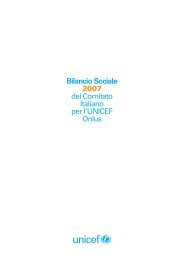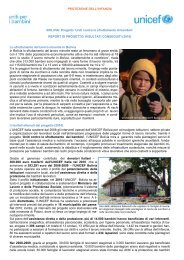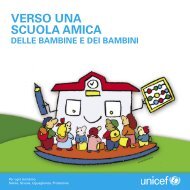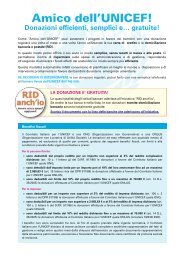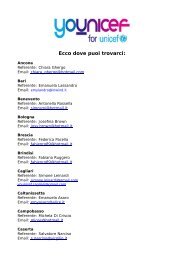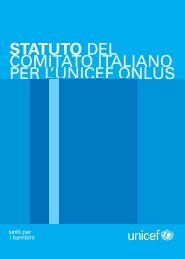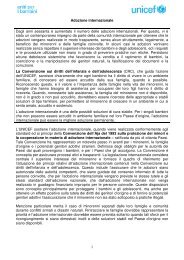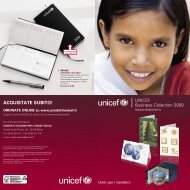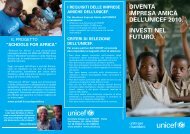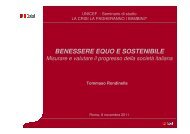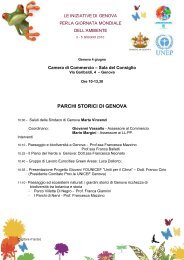Pakistan 1 Year Report - UNICEF Humanitarian Action Resources
Pakistan 1 Year Report - UNICEF Humanitarian Action Resources
Pakistan 1 Year Report - UNICEF Humanitarian Action Resources
You also want an ePaper? Increase the reach of your titles
YUMPU automatically turns print PDFs into web optimized ePapers that Google loves.
A YEAR ON:Hope AmidstVulnerability• Vulnerabilities of womenand children• Strategic early recoveryaction• Building capacity torespond to new risks©<strong>UNICEF</strong>/PAK/2010/RamonedaVulnerabilities of Women and ChildrenThe pre-flood challenges facing <strong>Pakistan</strong> in achieving theMillennium Development Goals (MDGs) - widespreadchronic malnutrition, inadequate sanitation practices andlagging school enrolment rates - were aggravated by thefloods and a year on still affect millions.• Access to improved water sources and toilet usagedropped and these remain critical issues.• The incidence rate of diarrhoea and acute respiratoryinfections has increased while access to health facilitieshas fallen.• The Flood Affected Nutrition Surveys revealed criticalglobal acute malnutrition rates in Sindh and in Punjab.• The primary school enrolment rate has been negativelyaffected.• Protection issues remain, including trafficking andexploitation, child marriage and child labour.• In north-western <strong>Pakistan</strong>, more than 1 million people(including flood-affected) remain displaced followingthe 2009-2010 militant action, with new operations in2011 displacing more than 5,000 additional families.The floods created new vulnerabilities while exacerbatingexisting ones. Debts incurred from lost crops andre-planting are high. Many communities lack services,infrastructure, safe drinking water, schools and healthclinics. The poorest of the poor - many living in flood-riskzones - suffered the heaviest proportional losses, sinkingeven further into poverty. Displacement brought thosefrom previously unreached rural areas into camps, revealingto responders the full extent of their vulnerabilities,particularly in nutrition, education and sanitation 1 .The comprehensive flooding also left fluvial structuresdamaged and vulnerable, elevating the risks of crisis thatcould occur from the regular monsoon season.Challenges continue to affect service delivery and raisecosts of early recovery efforts, including: the sheer sizeand geographical spread of the population affected andthe logistical difficulties in delivering assistance; thelimited number and capacity of partners and the negativeimpact of the floods on community service providersthemselves; and lack of access to areas and security risksdue to militant actions.Coordinated Early Recovery <strong>Action</strong>Seeds of hope continue to be sown through strategic,6 • Children in <strong>Pakistan</strong>



